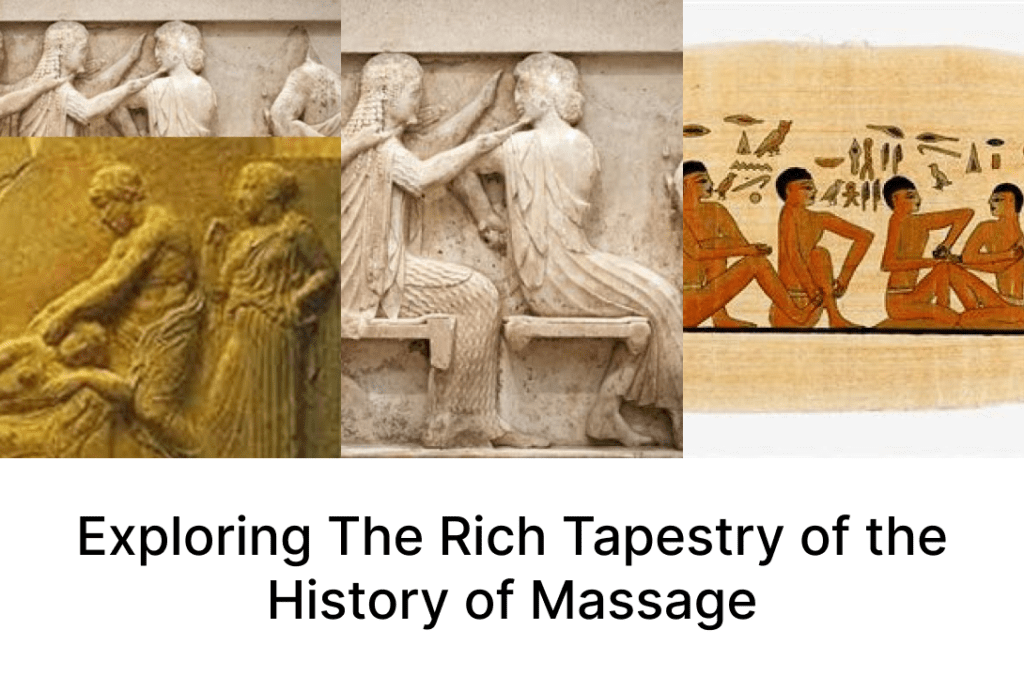History of Massage 2

In the vast realm of wellness and self-care, the history of massage stands as a testament to the ancient art that transcends time. This comprehensive exploration delves into massage therapy’s roots, evolution, and cultural significance, shedding light on its profound impact on physical and mental well-being.
Ancient Origins: A Timeless Practice
Massage, as we know it today, has roots that reach deep into the annals of history. Tracing back to ancient civilizations such as Egypt, China, and India, massage was an integral part of holistic healing practices. The ancients recognized its power to restore balance and alleviate physical ailments.
The Renaissance and Revival
While the Middle Ages saw a decline in the practice of massage, the Renaissance period witnessed a revival of interest in the human body and its intricate workings. Influential figures like Ambroise Paré and Per Henrik Ling played pivotal roles in reintroducing massage as a therapeutic art.
The 19th Century: Massage Enters the Modern Era
As the 19th century unfolded, massage transformed, evolving from a luxury for the elite to a mainstream health practice. Pioneers like Johann Mezger standardized massage techniques, laying the foundation for their integration into medical care.
Swedish Massage: A Landmark Contribution
One cannot explore the history of massage without acknowledging the significant contribution of Swedish massage. Developed by Per Henrik Ling, this technique became a cornerstone in the field, emphasizing long, flowing strokes and kneading motions. Its popularity soared, and it remains a quintessential component of massage therapy worldwide.
Massage in the Modern World: A Holistic Approach
In the contemporary landscape, massage has transcended its traditional boundaries. Beyond mere physical relief, it is recognized for its holistic approach to well-being. Massage therapy encompasses diverse modalities, including Swedish, deep tissue, Thai, and hot stone massage, catering to individual preferences and needs.
Cultural Significance Across the Globe
The global embrace of massage therapy underscores its universal appeal. From the serene spas of Bali to the bustling streets of Tokyo, diverse cultures have integrated massage into their wellness practices. Each culture brings unique flavor to the art, adding to the rich tapestry of global massage traditions.
Scientific Validation: Massage and Health Benefits
In recent decades, scientific research has provided compelling evidence of the health benefits associated with massage. Beyond relaxation, studies have demonstrated its efficacy in reducing stress, improving circulation, and alleviating chronic pain. The marriage of ancient wisdom and modern science has solidified massage as a credible therapeutic intervention.
Massage in the Digital Age: Accessibility and Innovation
The digital age has ushered in new possibilities for accessing massage services. Online platforms connect clients with skilled therapists, offering convenience and flexibility. Additionally, innovative technologies such as massage chairs and virtual reality experiences have redefined the massage landscape, making it more accessible than ever before.
Conclusion
The history of massage is a captivating journey through time, weaving together ancient practices, cultural nuances, and modern innovations. As we continue to appreciate the profound impact of massage on our well-being, it is evident that its legacy endures, proving that the art of touch is, indeed, timeless.
